
|
|
|||||||||||
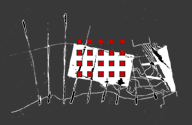 |
|||||||||||
|
|
|||||||||||
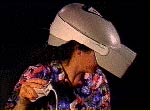 |
|
| The Head Mounted Display | |
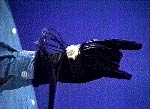 |
|
| The Dataglove | |
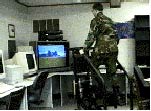 |
|
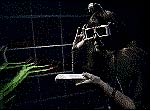 |
|
The
first head-mounted display (HMD)
The first viewing helmet was developed by the Philco Corporation in 1955-56.
It was built from an American footballer’s helmet equipped with just
one monitor and a system of mirrors in front of the user’s eyes.
The imagery was provided by a remote camera which moved at the same time
and in the same direction as the helmet’s wearer. Almost ten years
later, at the University of Utah, Ivan Sutherland, one of the pioneers
of computer-generated images and also of virtual reality, developed a
head-mounted viewer that resembled a pair of glasses, incorporating cathode-ray
tubes in the sides and, once again, a system of mirrors in front of the
viewer’s eyes. A sensor suspended from the ceiling — giving
the device its name, the Sword of Damocles —, allowed for the images
to be co-ordinated in real time with the changing position of the user’s
head.
Towards the end of the 1970s, the American Navy started working on the
use of head-mounted display devices in the field of underwater exploration
with remote-controlled robots. In the early 80s, the Architecture Machine
Group managed to devise a low cost helmet using liquid crystal displays,
while researchers at the University of Tsukuba in Japan were developing
similar techniques for the remote control of robots. At the same time,
the US Air Force was working to develop systems whereby pilots could see
computer-generated data superimposed onto the land they were flying over,
and images of their flight path even in conditions of zero visibility.
Since 1985, NASA has been working on the possibilities of using stereoscopic
viewing helmets in space stations and other space missions. This program
was the first head-mounted display system to also include stereophonic
sound, speech input, and instrumented gloves to interact with virtual
objects.
The dataglove
The earliest device for interactivity in a virtual environment and with
virtual objects was the dataglove developed at NASA Ames. These gloves
were fitted with special sensors to measure the bend of the fingers and
equipped with a magnetic tracking system which allowed for the glove,
and the hand inside it, to be followed in three-dimensional space. More
advanced equipment is available today, such as the Cyberglove built by
the Virtual Technologies company, for high-resolution activity, or the
Mattel Powerglove which is used for example in Nintendo games. Japanese
researchers at the University of Tsukuba have developed a device with
mechanical force-feedback sensors. The user puts his hand into the device
and can manipulate a virtual ball and also feel a simple virtual surface
of the object. But there is still no device which can give the user the
impression of holding a solid object in the hand and ability to handle
it freely. This is a major research challenge and many research programmes
are trying to achieve the capability of user reactions such as this.
VRML
(Virtual Reality Modeling Language)
The Virtual Reality Modeling Language is a language for describing multi-participant
interactive simulations-virtual worlds networked via the global Internet
and hyper-linked with the World Wide Web.
The first version of VRML allows for the creation of virtual worlds with
limited interactive behavior. These worlds can contain objects which have
hyper-links to other worlds, HTML documents or other valid MIME types.
VRML was conceived in the spring of 1994 at the first annual World Wide
Web Conference in Geneva, Switzerland. Tim Berners-Lee and Dave Raggett
organized a session to discuss Virtual Reality interfaces to the World
Wide Web. The term Virtual Reality Markup Language was coined, and the
group resolved to begin specification work after the conference. The word
"Markup" was later changed to "Modeling" to reflect
the graphical nature of VRML.
For more informations:
http://www.sdsc.edu/vrml
Some interface designs used in Virtual reality
VR Hardware such as
-Wands, the
simplest of the interface devices, come in all shapes and variations.
-trampoline
into a pseudosurf board
-attached sensors to a mock tractor cab
-Stairsteppers are an example of the limitless manifestations of interface
devices Types of VR
-Window on World Systems (WoW)
-Video Mapping
-Immersive Systems
-Telepresence
-Image Generators
-Manipulation and Control Devices
-Mixed Reality
-Position Tracking
-Stereo Vision